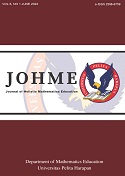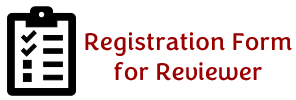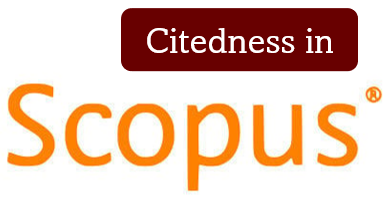PENERAPAN METODE ROUGH - ORDINAL LOGISTIC REGRESSION UNTUK PEMODELAN FAKTOR-FAKTOR YANG MEMENGARUHI TINGKAT STRES MAHASISWA DALAM PEMBELAJARAN JARAK JAUH [APPLICATION OF THE ROUGH - ORDINAL LOGISTIC REGRESSION METHOD FOR MODELING FACTORS AFFECTING STRESS LEVELS OF STUDENTS IN DISTANCE LEARNING]
DOI:
https://doi.org/10.19166/johme.v6i1.4696Kata Kunci:
ordinal logistic regression, stress levels, distance learning, regresi logistik ordinal, tingkat stres, pembelajaran jarak jauhAbstrak
The COVID-19 pandemic has changed the whole way we live, especially in the field of education. Distance learning as a result of the COVID-19 pandemic has had a stressful effect on students. This study aims to model the factors that influence students' stress levels towards distance learning. A total of 256 students of the Faculty of Teacher Training at Maulana Malik Ibrahim Malang State Islamic University participated in answering a 4-scale Likert questionnaire that was analyzed using the ordinal logistic regression method. The results of the study prove that there are significant factors affecting student stress levels in distance learning during the pandemic. These factors are: (1) different environments between students and lecturers; (2) frequency of assignments; (3) difficulty in understanding the material; (4) strong internet connection; (5) difficulty in coordinating with groups; (6) non-fixed lecture schedules; (7) the number of activities at home; and, (8) internet quota needs. The power of association score R2 with the Nagelkerke method was obtained by 0.776 (77.6%) which means that 77.6% of the independent variables were able to explain the stress level of students.
BAHASA INDONESIA ABSTRACT: Pandemi covid-19 telah mengubah keseluruhan cara hidup kita, khususnya bidang pendidikan. Pembelajaran jarak jauh sebagai dampak dari adanya pandemic covid-19 telah memberikan pengaruh stres pada mahasiswa. Penelitian ini bertujuan untuk melakukan pemodelan terhadap faktor-faktor yang mempengaruhi tingkat stres mahasiswa terhadap pembelajaran jarak jauh. Sebanyak 256 mahasiswa Fakultas Ilmu Tarbiyah dan Keguruan UIN Maulana Malik Ibrahim Malang berpartisipasi dalam menjawab angket Likert berskala 4 dan dianalisis dengan metode regresi logistik ordinal. Hasil penelitian membuktikan bahwa terdapat faktor signifikan mempengaruhi tingkat stres mahasiswa dalam pembelajaran jarak jauh di masa pandemi. Faktor-faktor tersebut adalah: (1) lingkungan yang berbeda antara mahasiswa dengan dosen; (2) intensitas pemberian tugas; (3) kesulitan memahami materi; (4) kelancaran akses internet; (5) kesulitan berkoordinasi dengan kelompok; (6) jadwal perkuliahan yang tidak tetap; (7) banyaknya kegiatan di rumah, dan (8) kebutuhan kuota internet. Nilai kekuatan asosiasi R2 dengan metode Nagelkerke diperoleh sebesar 0,776 (77,6%) yang menunjukkan bahwa 77,6 % variabel bebas mampu menjelaskan tingkat stres mahasiswa.
Referensi
Agresti, A. (2002). Categorical data analysis. Hoboken, NJ: Wiley-Interscience.
Bai, J. (2016). Perceived support as a predictor of acculturative stress among international students in the United States. Journal of International Students, 6(1), 93-106. https://doi.org/10.32674/jis.v6i1.483
Desky, D. F. (2021). Pengaruh pandemi covid - 19 terhadap tingkat stres dan pola tidur pada mahasiswa fakultas kedokteran Universitas Sumatera Utara [Undergraduate Thesis]. Retrieved from http://repositori.usu.ac.id/bitstream/handle/123456789/30845/170100039.pdf?sequence=1&isAllowed=y
Ganesan, Y., Talwar, P., Norsiah, F., & Oon, Y. B. (2018). A study on stress level and coping strategies among undergraduate students. Journal of Cognitive Sciences and Human Development, 3(2), 37-47. https://doi.org/10.33736/jcshd.787.2018
Hosmer, D. W., Lemeshow, S., & Sturdivant, R. X. (2013). Applied logistic regression. In Wiley Series in Probability and Statistics. https://doi.org/10.1002/9781118548387
Karin, K., Efendi, R., Chairani, L., & Sari, I. M. (2021). Implementasi regresi logistik ordinal pada sistem pembelajaran daring di era covid-19 terhadap kesehatan mental guru SD di kota Pekanbaru. Jurnal Sains Matematika dan Statistika, 7(1), 65-74. https://doi.org/10.24014/jsms.v7i1.11786
Khaza, A. (2021). Analisa permasalahan “industri mebel” saat pandemi. Retrieved from https://www.kompasiana.com/ahmad93740/6139dd0206310e723c41a3c2/analisa-permasalahan-industri-mebel-saat-pandemi
Kutner, M. H., Nachtsheim, C. J., & Neter, J. (2004). Applied linear regression models. New York, NY: McGraw-Hill/Irwin.
Martoredjo, N. T. (2020). Pandemi covid-19: Ancaman atau tantangan bagi sektor pendidikan? [Unpublished Paper]. Retrieved from http://eprints.binus.ac.id/36494/
Musabiq, S., & Karimah, I. (2018). Gambaran stress dan dampaknya pada mahasiswa. Insight: Jurnal Ilmiah Psikologi, 20(2), 75-83. https://doi.org/10.26486/psikologi.v20i2.240
Musradinur. (2016). Stres dan cara mengatasinya dalam perspektif psikologi. Jurnal EDUKASI (Media Kajian Bimbingan Konseling), 2(2), 183-200. https://doi.org/10.22373/je.v2i2.815
P2PTM Kemenkes RI. (2020). Apakah yang dimaksud stres itu? Retrieved from http://p2ptm.kemkes.go.id/infographic-p2ptm/stress/apakah-yang-dimaksud-stres-itu
Putri, N. I., & Budyanra. (2019). Penerapan regresi logistik ordinal dengan proportional odds model pada determinan tingkat stres akademik mahasiswa. Seminar Nasional Official Statistics 2019: Pengembangan Official Statistics dalam mendukung Implementasi SDG’s, 1, 368-378. https://doi.org/10.34123/semnasoffstat.v2019i1.104
Rahma, N. A., & Pujiastuti, H. (2021). Efektivitas pembelajaran daring matematika pada masa pandemi covid-19 di kota Cilegon. JOHME: Journal of Holistic Mathematics Education, 5(1), 1-12. https://doi.org/10.19166/johme.v5i1.3811
Ribeiro, F. M. S. S., Mussi, F. C., da Silva Pires, C. G., da Silva, R. M., de Macedo, T. T. S., & de Souza Teles Santos, C. A. (2020). Stress level among undergraduate nursing students related to the training phase and sociodemographic factors. Revista Latino-Americana de Enfermagem, 28, 1-11. https://doi.org/10.1590/1518-8345.3036.3209
Saleh, D., Camart, N., & Romo, L. (2017). Predictors of stress in college students. Frontiers in Psychology, 8, 1-8. https://doi.org/10.3389/fpsyg.2017.00019
Smeru. (2021). Ringkasan eksekutif: Dampak sosial ekonomi covid-19 terhadap rumah tangga dan rekomendasi kebijakan strategis untuk Indonesia. Retrieved from https://smeru.or.id/id/publication-id/ringkasan-eksekutif-dampak-sosial-ekonomi-covid-19-terhadap-rumah-tangga-dan
Stallman, H. M., & Hurst, C. P. (2016). The university stress scale: Measuring domains and extent of stress in university students. Australian Psychologist, 51(2), 128-134. https://doi.org/10.1111/ap.12127
Yuangga, K. D., & Sunarsi, D. (2020). Pengembangan media dan strategi pembelajaran untuk mengatasi permasalahan pembelajaran jarak jauh di pandemi covid-19. JGK: Jurnal Guru Kita, 4(3), 51-58. Retrieved from https://jurnal.unimed.ac.id/2012/index.php/jgkp/article/view/19472/13983Unduhan
Diterbitkan
Cara Mengutip
Terbitan
Bagian
Lisensi
Authors who publish with this journal agree to the following terms:
1) Authors retain copyright and grant the journal right of first publication with the work simultaneously licensed under a Creative Commons Attribution License (CC-BY-SA 4.0) that allows others to share the work with an acknowledgement of the work's authorship and initial publication in this journal.
2) Authors are able to enter into separate, additional contractual arrangements for the non-exclusive distribution of the journal's published version of the work (e.g., post it to an institutional repository or publish it in a book), with an acknowledgement of its initial publication in this journal.
3) Authors are permitted and encouraged to post their work online (e.g., in institutional repositories or on their website). The final published PDF should be used and bibliographic details that credit the publication in this journal should be included.”











